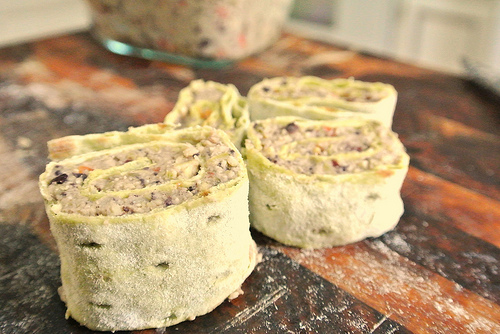Hey, welcome. Consider following MSV on Twitter and subscribing to the RSS feed, or sign up for email updates right over here.
Almond pâté is great, but it's so rich that it tends to get reserved around here for entertaining. But today's version may change that.
Today's creamy little wheels of joy come packed with a good dose of bright artichokes and gently spicy poblano peppers. The natural bitterness of green veg plays well with the natural sweetness of blanched almond meal.
The result is a predictably pleasing spread that comes across a little lighter thanks to that flavor tweak, plus the extra bulk from the finely chopped veggies.
Keep a batch of of this stuff in the fridge and get ready to seriously—and effortlessly—elevate your sandwiches. And pretty much anything else you put in your pie hole.
Artichoke and Poblano Almond Pâté
serves 4-8, adapted from here (post includes credit links)
3 oz (app. 3/4 cup) frozen artichoke hearts, thawed
1 small poblano (2 1/2-3 oz total weight), trimmed, seeded, veined, and roughly chopped
1 tsp lime zest
150 g blanched almond meal
1/4 cup lime juice
1/2 cup unsweetened soy milk
3 TBSP olive oil
1 small clove garlic
1/2 tsp fine sea or kosher salt
Use a food processor to finely chop artichoke hearts and poblano. Add lime zest to processor bowl and set aside.
Blend all other ingredients with an immersion blender until smooth. Stir in veggies and lime zest.
For a softer spread, heat oven to 350. Divide evenly between two 10-oz ramekins. Bake 40-45 minutes, or until puffed and golden brown on top. The spread can be used immediately as a tart base before baking, or let cool before serving on a tartine or crackers.
Alternately, to mold, line two 10-oz ramekins with a double layer of cheesecloth. Divide the mixture evenly between the ramekins, fold cheesecloth over, and chill for at least 3 hours, or up to overnight. (In a pinch, chill in the freezer for 30 minutes.)
Heat oven to 350. Use the cheesecloth to lift the pâté from the ramekins, carefully transfer to an oiled (or parchment-lined) baking sheet (without cheesecloth), and bake 40-45 minutes, or until golden.
Let cool thoroughly before transferring to the refrigerator. This pâté improves as it sits, when the flavors have had a good chance to mingle.






































































